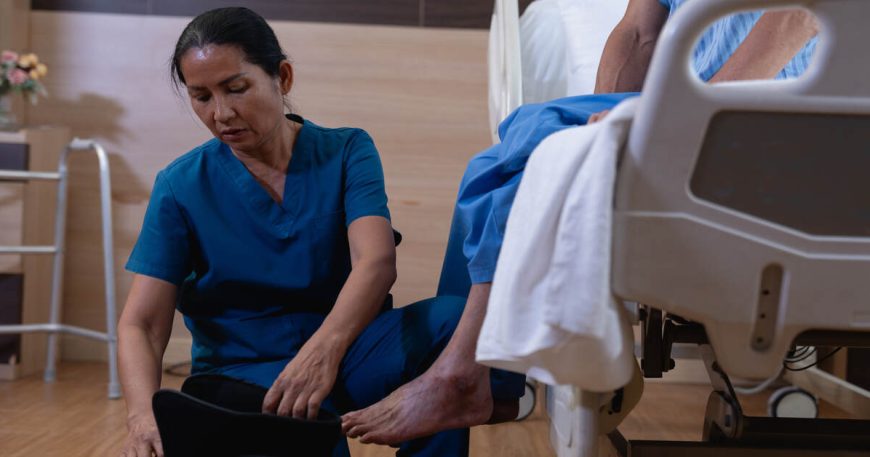
What Are the Best Resources for Enhancing Podiatric Knowledge?
Constant learning and improvement of skills in the fast changing world of podiatry is essential in ensuring that the professional offers the most appropriate services to the patients. Due to the evolution of technology, modalities of treatment and ways of managing patients, podiatrists should remain updated and flexible. This blog highlights the different educational tools that can be used by podiatrists, the quality of lifelong learning and professional development as a way of increasing knowledge and skills.
The relevance of life-long learning in the field of podiatry
Similar to any other medical profession, podiatry is defined by continuous improvements in research, technology and treatment techniques. There are a number of reasons why continuous education is necessary:
Staying abreast with the developments: Techniques, technologies and new research continue to be added to the field of podiatry. It is also important to keep up with these changes to provide effective and evidence-based care.
Improving Patient Outcomes: With better knowledge and skills, patients get better care and thus better outcomes and increased patient satisfaction.
Regulatory Requirements: There are several states and professional bodies that mandate continuing education courses of podiatrists to remain licensed and certified.
Professional Development: Continuous education also gives podiatrists an opportunity to broaden their scope, specialize in other fields, and develop their careers.
Educational Resources Educational Resources Podiatrist
1. Professional Associations
One of the best methods of making educational resources available to the podiatrist is through joining professional associations. Associations such as the American Podiatric Medical Association (APMA) and the American College of Foot and Ankle Surgeons (ACFAS) contain a plethora of information such as:
Continuing Education Courses: These organizations offer accredited courses that are very broad in nature, such as surgical techniques, or diabetic foot care.
Online Learning and Webinars: A lot of associations provide webinars and online learning modules, which mean that podiatrists can study at their own time and pace.
Annual Conferences: The conferences will give an opportunity to network, learn about the best practices and conduct practical workshops.
2. Educational programs and degrees on the internet
There are a number of online courses given that target podiatrists. The following websites will offer:
Specialty Certifications: Podiatrists have the opportunity to gain specialty certifications in different fields such as orthotics, sports medicine, and diabetic foot care to improve their qualifications and competencies.
Self-Paced Learning: Online courses also enable practitioners to learn at their own pace, and this keeps them to balance between education and the working life.
Interactive Learning: A lot of online courses involve the use of videos and quizzes and case studies to encourage learning and implementation of knowledge.
3. Journals and Publications
It is important that podiatrists be kept updated with professional journals and publications. The following are some of the suggested journals:
Journal of the American Podiatric Medical Association (JAPMA): It is a peer-reviewed journal, which releases research articles, clinical studies, and reviews, which are pertinent to the practice of podiatry.
Foot and Ankle Specialist: This is a journal devoted to the clinical and surgical practice in foot and ankle care covering the recent research and best practices.
Podiatry Today: This is a popular magazine that discusses up to date trends, clinical practices, and practice management ideas within the field of podiatry.
The subscription to these journals enables the podiatrists to have access to meaningful research, as well as to know about the evolving developments in the field.
4. Hands-On Training and Workshops
Another practical skill of participation can be in the form of attending workshops and practical training sessions. Many organizations offer:
Skills Workshops: These workshops are dedicated to a particular skill, like casting, suture or surgical procedures, and the skills of practitioners can be developed in a controlled setting.
Simulation Training: Other institutes offer simulation-based training, which is a simulation of real life situation, and is a chance where podiatrists can train their skills without the threat of causing harm to patients.
5. Mentorship and Peer Learning
It is possible to create mentorship relations with older practitioners to improve the knowledge and skills of a podiatrist to a considerable extent. This form of podiatry practitioner collaboration offers:
Mentoring and Mentoring: More senior practitioners can offer good tips, advice, and support as the younger practitioners find their way to the top.
Connection to other professionals: Mentorship may result in networking opportunities where the mentee can connect with fellow professionals and also resort to further learning.
Peer Learning Groups: Peer learning groups can also be joined or formed to provide knowledge sharing, case discussion and collaborative problem solving among podiatrists.
6. Community and Online Forums
Online communities and forums may be useful to the podiatrist who wants to find educational materials as well. Social networking sites such as Podiatry Arena and LinkedIn groups provide:
Discussion Forums: These forums will offer practitioners an opportunity to pose questions, experience sharing, and discussion of clinical cases and best practices.
Resource Sharing: The members tend to share articles, studies, and materials, which can improve knowledge and skills.
Conclusion
The field of podiatry is dynamic and therefore a practitioner requires continuous education to keep updated with the events, be able to improve care delivery to the patients and professional development. Through the utilization of diverse learning materials, such as professional organizations, distance learning, journals, seminars, mentoring, and discussion boards, podiatrists will be able to increase their knowledge and competencies successfully. Adopting the culture of lifelong learning will not only help the development of an individual practitioner, but it will also help the progress of the field in the future, which will eventually result in improved patient outcomes and a healthier healthcare system.
FAQs (Frequently Asked Questions)
1. What are the requirements of continuing education of podiatrists?
In order to retain their licensure, podiatrists are normally expected to achieve a specific number of continuing education hours annually. These may involve workshops, online classes and professional conferences.
2. Where can I locate podiatric specific courses online?
The specialized courses of podiatrist are provided by many organizations that have good reputation, including the American Podiatric Medical Association and other online learning platforms. One can find useful information by searching their websites or utilizing such platforms as MedBridge or Coursera.
3. What are the benefits of mentorship to podiatrists?
Mentorship offers mentoring, support and networking and career development opportunities. More senior practitioners can be able to give information about best practice, career development and clinical decision-making to make the learning experience of newer practitioners better.
Through such learning materials, the podiatrists will be in a position to stay at the front in their profession with the knowledge and skills required to deliver their patients with outstanding services.




